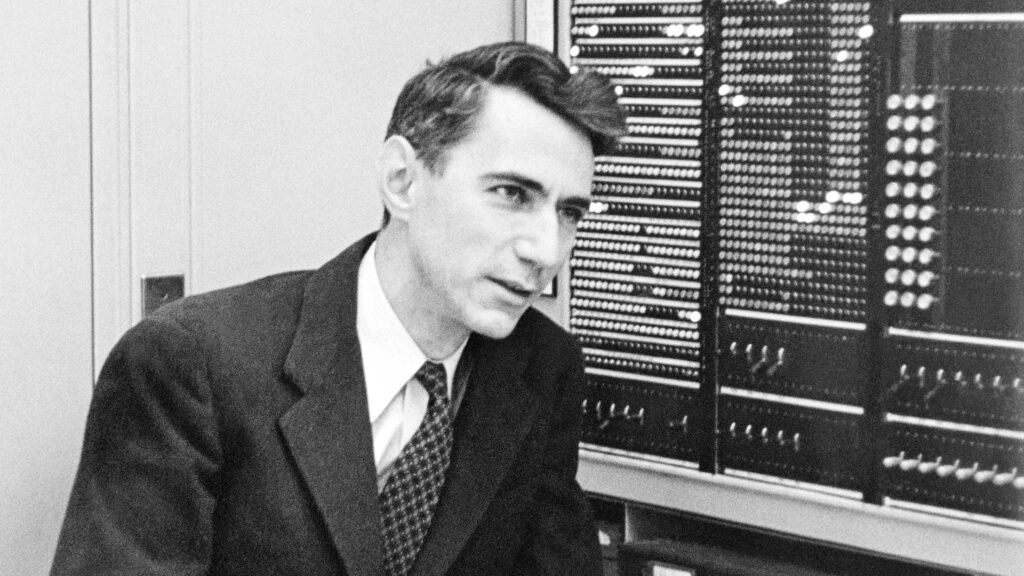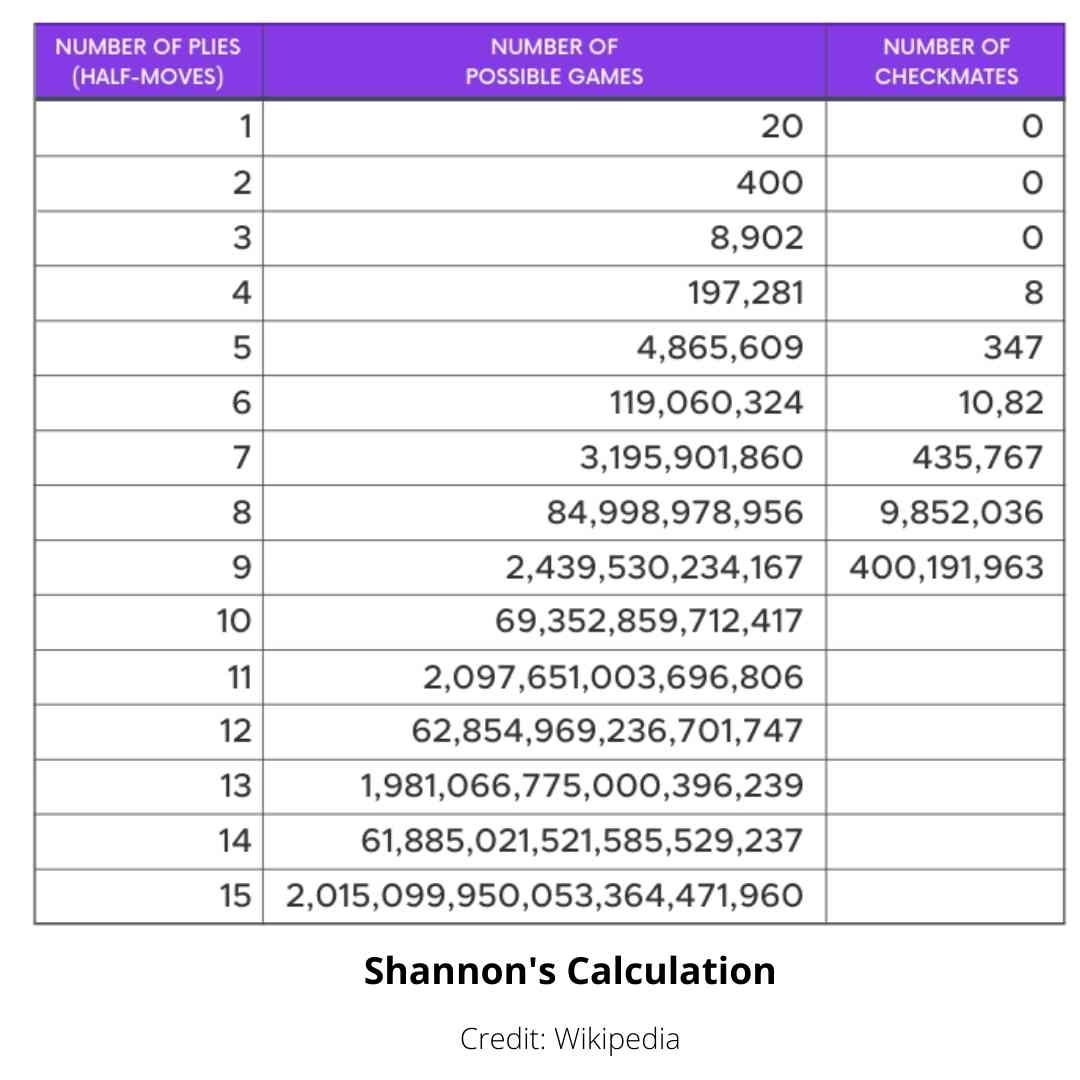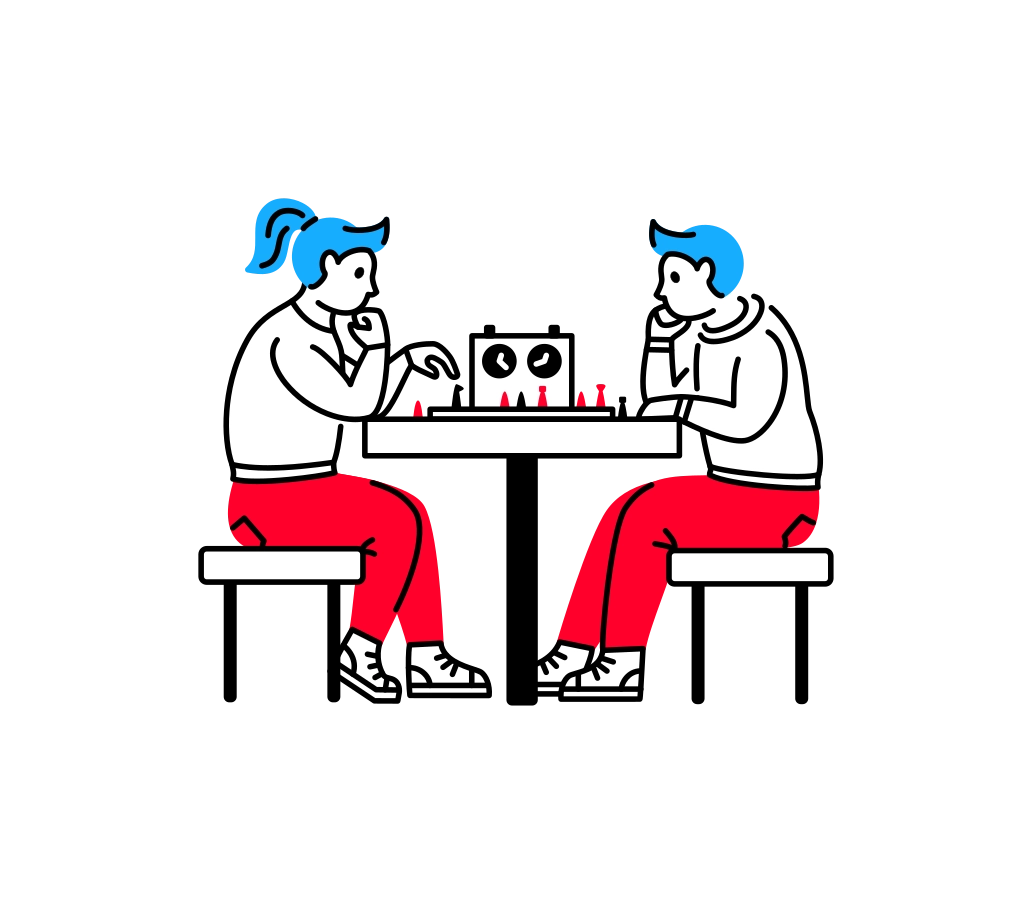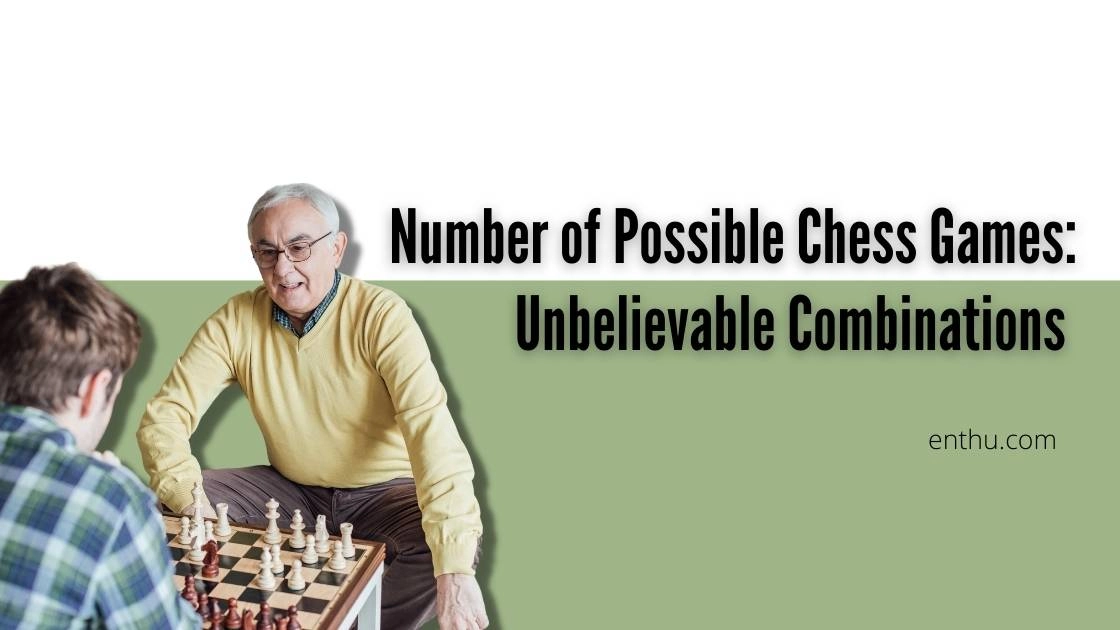Did you know a chess game can be played in 69,352,859,712,417 different ways? Yep, you heard it right. A chess game has a total of 32 pieces.
The number of chess games you can play by combining the pieces is still a curiosity in every chess lover’s mind. So, let’s get ahead with the number of possible chess games without any delay.
What is the Number of Possible Chess Games?
For centuries, chess players have debated the number of possible games some even believed it to be infinite. But deeper research leads us to a fascinating concept known as the Shannon Number, introduced by mathematician Claude Shannon. Before diving into what it means, let’s take a quick look at the brilliant mind behind it.
1. Who is Claude Shanon?

Claude Elwood Shanon was an American mathematician. He’s also known as the father of information theory, as he wrote the earliest paper on playing chess on a computer in 1950.
Claude Shanon’s works include an electronic mouse and chess-playing machines. The title of the paper is Programming a Computer for Playing Chess.
It was the first paper on this subject that introduced the concept of computer chess. Given it was a paper on programming, the number of game possibilities was the core of the paper.
2. What is the Shanon Number?
The Shannon Number (sometimes called Shannon’s Number) represents the estimated number of possible ways a chess game can be played.
It was proposed by Claude Shannon, the American mathematician and father of information theory, while discussing the game-tree complexity of chess. Shannon calculated that the number of possible chess games is roughly 10^120 (10 to the power of 120)—a figure so vast that it exceeds the number of atoms in the observable universe!
This staggering number highlights both the richness of chess and why it remains an endlessly fascinating game.
3. Shanon’s Calculation of the Number
Possible Games A chess match advances with moves. Each move increases the number of possible games and checkmates. In the below table, you can see the number of possible games increase as per the number of moves.
***Move by one player is a half move. Moves by two players are collectively called a (whole) move.

1. What is the Number of Possible Openings in Chess?

Debate on the number of possible in chess is still ON. Some claim 16 openings are possible; some say it’s 20. The highest claimed number of openings possible in a chess sport is 21, including the resignation move.
Check out EnthuZiastic Chess Classes for a personalized Chess learning experience.
2. Can a Chess Game Go Forever?
1. Let’s Find Out Yep
A chess match can go forever if you cut out a few FIDE laws of chess. Chess originated around the 26th BCE. Since then, this game has come a long way. It traveled from the Indian subcontinent to Europe, all the way through Persia, the Middle East, Russia, Italy, and Spain.
In Europe, it evolved over the course of centuries to become modern-day chess. Today, the rules of chess are set and regulated by the FIDE. As per those rules, a chess game can’t go on forever, especially because of the repetition of moves. Here are some FIDE laws of chess that make sure the game ends:
2. Three-fold Repetition
According to the rules set by FIDE, if one move (by both the players) repeats three times back to back in a game, then the game comes to an end. The arbiter will declare the game as drawn by threefold repetition.
In other words, a game can’t go on forever without repeating moves. In the case of repetition, the game ends because the moves after 3 times repetitions aren’t legal moves. So, the game ends either way.
3. 50-Move Rule
As per the rules set by FIDE, if there’s no pawn move or capture within the last 50 moves, then nobody wins the game.
It's a draw. In other words, the maximum number of moves without any pawn movement is 50. This rule sets another boundary in the possibility of a never-ending game.
If the game lasts too long, the pawns are bound to be captured, leaving only a few pieces behind.
In such cases, there is no movement of any pawn. So, the game ends in an immediate draw. Overall, FIDE rules make sure that no game go for forever.
4. Which is the Longest Chess Game Ever?
In terms of moves, the longest tournament chess match took place between Nikolic and Arsovic in Belgrade in 1989. It went for 269 moves. It went for 20 hours. In terms of duration, the longest game went for 24 hours 30 minutes in Israel in 1980. It was between Stepak and Mashian.

Conclusion
The game of chess is another universe for its fans. Once it sparks your curiosity, there’s no end to it. From learning its amazing benefits to finding out the highest number of possible games, chess never fails to surprise me.
Dear readers, I hope you liked the above facts. If you did, please check out how many chess grandmasters there are in the world. Trust me; you’ll be surprised.
FAQs
1) How many possible chess games are there?
The highest number of possible games is 2,015,099,950,053,364,471,960. This possibility is after 8 moves by white and 7 moves by black. The total number of possible games is 2,015,099,950,053,364,471,960, but after 15 half-moves (plies).
2) Is there a finite number of possible chess games?
Yes, there is a finite number of possible games. The number is 2,015,099,950,053,364,471,960.
3) Are there more possible chess games than atoms in the universe?
Many chess fans believe that the possible games are more than the number of atoms in the observable universe. According to the Shanon number, the number of ways one can play chess is 10 to the power 120.



.png)


Comments